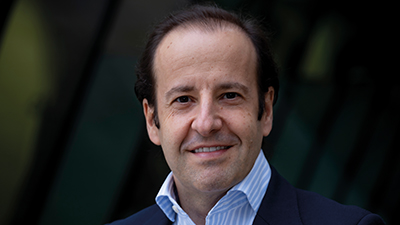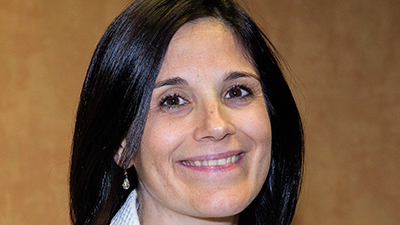more on the survey
Santander’s performance in Euromoney’s latest private banking and wealth management survey is nothing short of impressive.
In the annual survey of more than 2,000 senior global private bankers, it has sharply improved its position across the board.
Santander ranked sixth in best overall global private banking services in 2021, against eighth a year ago. Among ultra-high net-worth (UHNW) investors it jumped to fifth from ninth, and in investment management it improved to fifth from eighth.
With mass-affluents, a new category this year for those with $100,000 to $1 million in investable assets, it came top, ahead of Citi, HSBC and Credit Suisse.
Its private banking stock also rose on a local level. Santander ranked first in Spain, Portugal, Mexico, Poland and Chile, second in the US and fourth in North America.

Perhaps the only real shock is that a bank known for its strength in Latin America lost out in the region to JPMorgan for the second straight year.
If this is indeed a breakthrough moment for the Spanish bank, it’s worth noting it did not become a top international wealth manager overnight.
In 2017, Santander was casting around for ways to boost its numbers and, in particular, on wealth management.
Victor Matarranz, global head of Santander Wealth Management and Insurance, remembers the planning sessions well.
“I was in the strategy group, and when we analyzed our business in 2017, we saw the market share of the wealth business was smaller than our retail share in every market,” he says. “There were clear synergies in taking a more global approach and doing things not 10 times but once.”
He describes the bank’s approach to private banking at the time as “very local. We targeted the more affluent segment of each individual market and didn’t leverage the synergies.
There were clear synergies in taking a more global approach and doing things not 10 times but once
Victor Matarranz, Santander
“In the past, if a client from Mexico arrived in Spain, they would have been treated as if they were part of a different bank,” he adds. “From 2017 onward, we took a more integrated approach.”
That meant building a more cohesive wealth management institution able to serve clients globally, with private bankers drawing on the same set of products and technologies – regulations permitting – in every market.
The group caters to wealthy clients in nine countries: four in Europe (Spain, Portugal, the UK and Poland) and Latin America (Argentina, Brazil, Chile and Mexico), plus the US.
In September 2017, the bank pooled its private banking operations and tapped Matarranz to run them. Overnight, relationship managers (RMs) felt and saw the difference.
Global link
Whether in Madrid or Mexico City, RMs now had two reporting lines: a local one and a global link straight to Matarranz.
He made sure each team felt needed. Before Covid struck, he would jet in to have breakfast and visit as many private wealth clients as possible.
The pandemic kept him earthbound for much of 2020, but he’s eyeing a return to the skies. The day he speaks to Euromoney, Matarranz was scheduled to fly to Brazil, only for the emergence of a more virulent strain of Covid to nix his plans.
For the first time, RMs felt like a global team rather than dots on a map.

“We knew each other of course – I knew the other heads of private banking – but we didn’t have a real institutional link or a global added-value proposal for our customers, particularly those with more wealth,” says Adela Martin Ruiz, head of private banking Spain.
Before the wealth management merger, the brand was aligned visually and geographically. Wherever a customer was in the world, Santander looked and felt alike. The difference was that it was now able to offer the same private banking services to high net-worth and UHNW clients.
The financial impact was immediate. Santander’s wealth management and insurance division generated a pre-tax profit of €858 million in the first nine months of 2018 and €920 million in the same period a year later.
Covid clipped that number to €878 million in the first nine months of 2020 – but the impact of the reorganization on its bottom line is undeniable.
Wealth management and insurance accounted for 7.8% of group profits in the first nine months of 2018 and 12.2% in the same period in 2020. In terms of underlying profit attributable to the parent, the ratio jumped from 10.6% in 2018 to 17% in 2020.
We didn’t have a real institutional link or a global added-value proposal for our customers, particularly those with more wealth
Adela Martin Ruiz, Santander
For Santander, private banking and wealth management matters more than ever.
The Covid pandemic hit all banks at some level. At Santander, retail banking absorbed most of the pain, with profits in the division down 46.1% year on year through the first nine months of 2020.
The bank posted a €10.8 billion loss in the first half of 2020, but its numbers improved sharply in the third quarter, and it was on track to post a full-year underlying profit of about €5 billion.
Key challenge
A key challenge facing Santander’s wealth management team is scale. Historically, the group built by acquisitions.
A key moment was its 1994 purchase of Banco Espanol de Credito (Banesto), which turned it into Spain’s largest lender. Then came expansion by acquisition in Portugal and Latin America, where it bought Mexico’s Serfin, Banespa in Brazil and Chile’s Banco Santiago.
More M&A followed, before and after the global financial crisis: Abbey and Alliance & Leicester in the UK; Sovereign Bancorp in the US; Bank Zachodni WBK of Poland; and the German retail and commercial banking business of Sweden’s SEB.
In time, the hard work started to pay off. It transformed itself into a top-class provider of private banking services, focusing on all levels of wealth from mass-affluents up, with a notable focus on the super-rich.
Matarranz reckons profits in the global UHNW sector grew 17% year on year in the first nine months of 2020. Martin Ruiz, the head of Spanish private banking, says it has a “huge opportunity in ultra-high” wealth.
This works particularly well for Santander, given the historical, financial and cultural links binding Spain with Latin America.
Money has flowed between the two for generations. The southbound flow is usually stronger but not always.
When Francisco Franco ruled Spain, wealthy families moved their fortunes to the likes of Uruguay and Argentina. After the dictator fell, a lot of that money found its way back.
That works to Santander’s image among clients. Ruiz says it has battled hard to be seen as “an international bank with Spanish roots.”
Add to the mix the benefits of the internal wealth merger and you begin to see how a once-peripheral lender from a country not known as a powerhouse of modern finance has become a serious player in private banking.
Joined-up thinking
Joined-up thinking helps. In the past, there was scant cross-border sharing of customer data. Now, the bank knows far more about its clients.
It doesn’t matter if a family from Mexico City walks into a private-banking lounge in Madrid, Miami or London.

This only works because of the bank’s strength in Latin America’s biggest markets. Local presence matters in the region. It sets Santander apart from the herd.
“When I worked at another international bank in Brazil, the issue was deciding if we wanted to grow or to stay small,” says Vitor Ohtsuki, a 20-year veteran who was promoted to head of Santander Private Banking Brazil in February 2020.
“In Brazil, you need to have volume and a strong onshore operation to survive,” he says. “That allows us to fight with our local competitors.”
Ohtsuki says the product that differentiates the bank from its peers is Santander Private Real Estate Advisors, which offers advisory and execution services in commercial property to global clients.
He adds that in a low interest rate environment, rich customers in Latin America have switched their attention to alternative investments, including private equity and gold.
The bank isn’t able yet to offer the same services in every market, but Ohtsuki hopes it will happen soon. “We have caught up a lot in that area over the past five years.”
Fernando Buendia, Santander’s veteran head of private wealth Mexico, serves a market where private banks tussle over a narrow universe of around 1,000 UHNWs and 150 family offices, and where rich clients favour putting their money to work overseas in equities and, increasingly, private equity and real estate.
A local titan is increasingly likely to own assets in multiple jurisdictions and values the personal touch and financial heft of a banking partner able to move capital seamlessly across the region.
In Brazil, you need to have volume and a strong onshore operation to survive
Vitor Ohtsuki, Santander
“When I have a client trying to invest in Brazil or to buy something or get credit, if I can do that, I have an advantage over everyone in Mexico,” says Buendia.
His home market has a bright future as an agricultural hub and a manufacturing base serving the US, but a history of currency devaluations and political instability make the rich wary about holding their wealth onshore.
Local clients, Buendia says, “instinctively look to put their money to work outside the country, in Latin America or Spain.”
Santander’s strength in both places gives it “a very big advantage” he adds. “If we explore this advantage, we can build a fortress to keep our competitors out. Given our position in Spain and Latin America, we have an extraordinary opportunity.”
Personal touch
The personal touch is part and parcel of private banking everywhere, but doubly so in Iberia and Latin America, where financial advisers are extensions of the family.
“In Spain, you know you are getting along well with a customer when they invite you to their daughter’s wedding,” notes Spain private banking head Martin Ruiz. “I don’t have a personal portfolio anymore, but I still get many invitations.”
Then there’s the US, the next big link in the chain and, for some at the bank, the greatest prize of all. Spain may be the bank’s spiritual and corporate home and Latin America its primary source of profit in recent years, but the US may well be its future.
Its purchase of Sovereign Bancorp, completed in 2009, has at times seemed like an albatross around its neck. The division, now called Santander North America, had 620 branches and $142 billion in assets at the end of June 2020.

Analysts and investors have queried its strategy and even the need to have a presence at all in a market in which it has at times struggled to break even. But its value in pure private banking terms is immense.
Alfonso Castillo, bearded and loquacious, joined in 2018 as group head of private wealth. In March 2020, he was handed two additional titles, as head of Santander Private Banking International and chief executive of Banco Santander International.
Based in Miami, he also oversees operations in Houston, San Diego and New York.
Castillo reckons 90% of the bank’s wealth book in the US is made up of Latin American clients with assets and property registered north of the Rio Grande. Miami is still the natural gateway for Latin American money looking to enter the US.
“In terms of investment, Latin America looks to the US,” he says. “For Latin Americans, the US is a safe place: it offers hard currency dollars; it means a place where they can put aside some savings for a rainy day; and it diversifies the risks they are already assuming in their home countries.”
Castillo points to real estate and alternative investments as products his private wealth clients like to book in Europe and the US.
Just as Santander moved in 2017 to piece together its wealth business, so it is now mapping out a strategy to make its US business more dominant and valuable.
Santander North America is focused on the northeast US states, but that has to change.
“What we need is to connect that bank to our more natural markets in the southern states,” says Matarranz. “We opened a branch in Miami to cater to wealthy US clients, and our plan is to continue to build on our licence there over the coming years.”
That branch opened for business in the third quarter of 2020.
It moves Santander a step closer to being a genuine financial force in the world’s largest economy, where it can book investments for clients from Europe, Latin America and the US itself.
Castillo describes North America as “the most important market in the world” and as a future “game changer” for Santander.
“The Latin American population in the southern states – Texas, Georgia, California, Florida – is huge, and the perception is that we are one of the biggest and safest banks in the world,” he adds. “Given our brand recognition, we should seize this unique opportunity for us.”
It’s worth noting that in the latest US Census, published in 2020, the share of citizens describing themselves as ‘Hispanic and Latino’ was 18.5%, against 16% a decade ago.
The Latin American population in the southern US states is huge, and the perception is that we are one of the biggest and safest banks in the world
Alfonso Castillo, Santander
Castillo also tips more Europeans to book investments in North America, “even those who used to split part of their wealth between Switzerland or Luxembourg and North America.”
And Santander isn’t finished growing yet.
“We still need to build up our presence in Anglo-Saxon markets,” says Matarranz.
That means building out its US domestic business and broadening the bank’s relatively narrow reach in the UK.
Then there is Europe’s biggest market, Germany, where there is potential for the bank to build on its small but growing mass-affluent business.
Beyond that lies the more distant prospect of a concerted push into Asia.
“We have good corporate banking links in Asia and a partnership with Bank of Shanghai, so it may be a natural step in time,” says Matarranz.
The bank bought an 8% stake in the mainland Chinese lender in 2013 for $647 million.
And that’s just the top-line strategy. The private banking team is just as committed to honing its softer skills.
As part of its remit to serve the next generation – be they millennial entrepreneurs or the Zoomers of Generation Z set to inherit wealth – Santander offers courses at some of Europe’s top universities.
Since 2002, Santander Universities has invested €1.8 billion in supporting financial inclusion and handing out 430,000 scholarships at 1,000 universities in 22 countries.
In November 2020, it launched Future Wealth, a sort of all-purpose environmental, social and governance-friendly manifesto that pinpoints the trends investors should be on top of, from health innovation to smart cities, and shows how to incorporate innovation into a portfolio.
Santander’s transformation in private banking since its internal merger in 2017 is remarkable. Once a laggard, it is not quite a global leader, but it is getting there.







